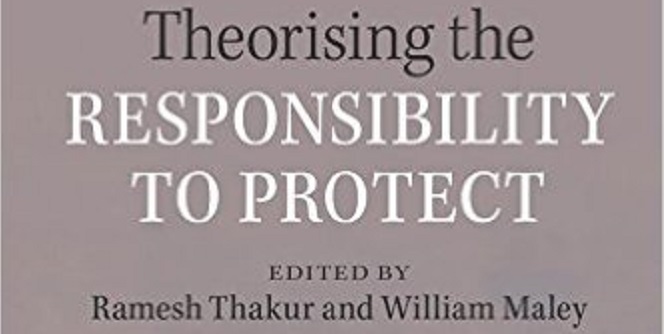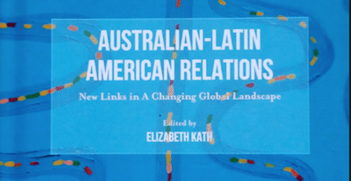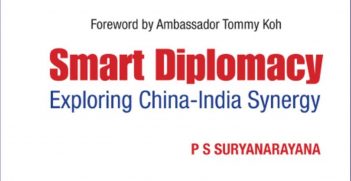Reading Room: Theorising the Responsibility to Protect

While the catastrophes of Rwanda, Srebrenica and Kosovo in the 1990s provided the recent focus for the international community’s response to the protection of individuals from the abuse of tyrants, there were many more shocking instances of the slaughter of innocent civilians that preceded these post-Cold War conflicts. The established norm of the last 350 years in this regard has been the sovereign state in its evolving form, driven in the West by a philosophy of liberalism emerging from the Enlightenment to encourage the idea of individual citizens having equality and protection under the Law within state boundaries. The dichotomy of individual rights versus the rights of the sovereign to rule over people and land has been a constant in this evolution and continues to frustrate the United Nations as an organisation of sovereign states committed by its charter to the rights of men and women.
In Theorising the Responsibility to Protect, Ramesh Thakur and William Maley, two of Australia’s leading thinkers on ethical governance and internationalism, have assembled an outstanding collection of well-referenced contributions from a broad spectrum of cultures and experience. It is an important attempt to draw out the issues surrounding the idea of the United Nations going beyond the ‘good offices’ dimension of its engagement with member nations to the use of force and sanctions to prevent the abuse of their citizens. The leading contributor, Gareth Evans, co-chair of the International Commission on Intervention and State Sovereignty, after detailing the evolution of Responsibility to Protect (R2P) principles and their acceptance or otherwise within the United Nations, optimistically encourages the idea that the international community is moving towards a new norm in intervention.
At the other end of the cultural spectrum, Siddharth Mallavarapu, chair of the Department of International Relations at the South Asian University, in his discussion on ‘Colonialism and the Responsibility to Protect’ sees R2P as a continuation of an interventionist philosophy favoured by former colonial powers and against the realisation of the sovereign aspirations of emerging nations.
In between these two views are many contributions that address the problems and work that would need to be done to move R2P towards a global norm. Particularly important is Jonathon Graubert’s chapter on ‘The Responsibility to Protect and Military Intervention’ in which he makes the case for the abolition of the military intervention component of R2P on the grounds that the stronger global powers are not beyond using humanitarian objectives as a cover for advancing their own strategic interests. This observation is repeated throughout the book and captures the UN dilemma of having five permanent members of the Security Council with the power of veto over any interventionist decisions of that body.
Perhaps the collection might have benefited in this regard from more discussion on the subject of the origin of the UN itself, which emerged from a commitment by the victors of the Second World War (the five permanent members) to ensure the establishment of a secure global environment, by force if necessary, in which people would be free to merge into member nation states. In that sense, it can be seen as a victim of its own success with tribal conflicts and ethnic cleansing emerging out of this process. The good outweighs the bad however and the number of nation-state members of the UN nearly quadrupled in the last half of the 20th century, without a major war, with a number of successful UN interventions to this end and a steady growth in the ratification of humanitarian and individual rights conventions and protocols.
What is particularly useful in this collection, to students and practitioners alike, is the historical context in which intervention has occurred and been justified in the past. These issues are not new. They preceded the UN and the conflicts of the 20th century that brought it about. Ethnic cleansing has been going on for a long time for cultural and racist reasons; sometimes for the protection of borders, sometimes to rectify land capture and consolidation by former invaders and sometimes because there is not enough food to go around. Given the complexity of a world with rapid population growth, climate change and the impact of technology on the labour forces of both the developed and the emerging economies, it can be expected that there will be many more people who will need the engagement and protection of the international community.
Theorising the Responsibility to Protect is a timely effort to get the issues onto the table and further the ratification of principles that might deter the abuse of citizens by tyrants. There is clearly a long way to go. In the meantime, it will be useful to remind leaders that terms like R2P and peace enforcement often mask a violent activity that is akin to war, if not war itself. Those that commit to these activities must have the means to do the job properly otherwise there is a high risk that they will lose their lives and the UN will lose its credibility.
Ramesh Thakur and William Maley (ed.), Theorising the Responsibility to Protect, Cambridge University Press 2015
Lieutenant General John Sanderson (Retd) is former Chief of the Australian Army and Force Commander of the United Nations Transition Authority in Cambodia (UNTAC). Between 2000 and 2005 he served as Governor of Western Australia.





